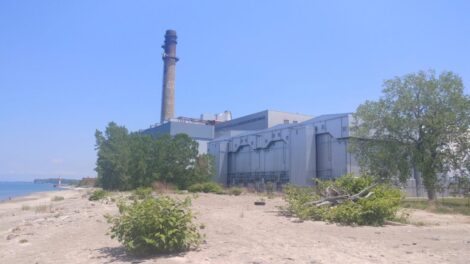Political bluster ignores big bucks

New York Senate Minority Leader Robert Ortt, R-Lockport speaks about the Republican Take Back New York agenda during a news conference before Gov. Kathy Hochul delivers her first State of the State address at the state Capitol, Wednesday, Jan. 5, 2022, in Albany, N.Y. (AP Photo/Hans Pennink, Pool)
Within hours of New York Gov. Kathy Hochul’s State of the State address on Jan. 5, Senate Republicans were already setting an ambitious tone for the coming year and campaign season. Its platform aims to return the party to some significance if they can muster enough support to turn the political tide.
In touting its “Take Back New York 2022” initiative, the conference echoes exactly what much of its upstate constituency wants to hear. The package aims for: a better quality of life for all New Yorkers, which includes the elimination of the controversial bail reform; making living here more affordable; developing a strong workforce and economy; improving the business climate; and ensuring security for vulnerable populations. All this, of course, while also restoring accountability to state government.
“Democrat One-Party Rule has been nothing short of a disaster for New York state,” said Senate Republican Leader Rob Ortt of Lockport. “From escalating taxes to blatant pro-criminal policies and extreme government overreach, it’s become harder than ever to live in our communities — something reflected in the growing exodus of our fellow New Yorkers.
It’s more vital than ever, for them, that we take back our state from out-of-touch politicians and restore some sanity and common sense to our government. Take Back New York 2022 is the first step in accomplishing that and restoring our reputation as the Empire State.”
It is an aggressive agenda, which on the surface, appears tough to oppose. Most who live north of New York City would agree those ideals are some of the important talking points when discussing the flaws that many believe begin in Albany.
That premise, however, would be only partially correct. What residents across upstate never want to acknowledge is the high tax burden they willingly accept and gladly approve of each year. They do so with their school budgets as well as municipal governments.
If there is one thing both state Democrats and Republicans can agree on, it’s this: there is no way those elected officials will be calling for school mergers or the dissolution of governments. They’ll usually say, rather incorrectly, that those discussions are better left to area residents and local officials.
That is the easy way out.
Making living in New York state more affordable begins at home. Unsurprisingly, Chautauqua County’s mix of schools, towns, one county, two cities and 13 villages lead to some of the highest property taxes in the nation that has led to the major population decline of the last 40 years from 147,000 to 127,000 residents — a 13.6% decrease. Many other upstate counties have faced the same struggles.
It is not the case downstate, which continues to financially subsidize frustrated upstaters who rarely seek out government efficiencies. Instead, these residents lash out at the fiscal policies endorsed by both parties that seem unfair to New York City.
In a report issued earlier this month by Comptroller Thomas DiNapoli regarding aid and incentives in the state’s local revenue sharing program, Buffalo, Rochester, Syracuse and Yonkers receive the biggest chunk of support. New York City, since 2011, has not received a dime from the program. “Compared to other cities in the state, New York City has very high property values, its own personal income tax and – despite large numbers of people in poverty — significant wealth that can be taxed,” the comptroller notes.
Interestingly, that same report notes the city of Dunkirk — among the cities with highest need — is being shortchanged, receiving less in Aid and Incentives for Municipalities dollars than 11 other entities, including smaller Hornell and Salamanca.
Speaking of cutting costs, no state or local official even wants to tightrope the obese budgets for public schools. Of the 20 districts currently operating around Chautauqua County — including Gowanda and Randolph — 14 have enrollments below 800 students for kindergarten to grade 12. Consolidating some of these districts would decrease a substantial portion of what Republicans consider “our highest-in-the-nation tax burden.”
All these small schools, it must be noted, drive up the educational cost per student. Consider the county’s tiniest school in Ripley, which has an enrollment of 115 students as noted by the state Education Department report card. The cost per student there — based on a $9.7 million budget — is around $41,276. That is higher than the current state average of $30,000.
If New York’s elected officials — from both parties — really want to rein in excessive spending, they can begin with the entities at the local level and those they represent. Everything else, regarding out-of-control costs, is a distraction.
John D’Agostino is the editor of the OBSERVER, The Post-Journal and Times Observer in Warren, Pa. Send comments to jdagostino@observertoday.com or call 716-366-3000, ext. 253.






